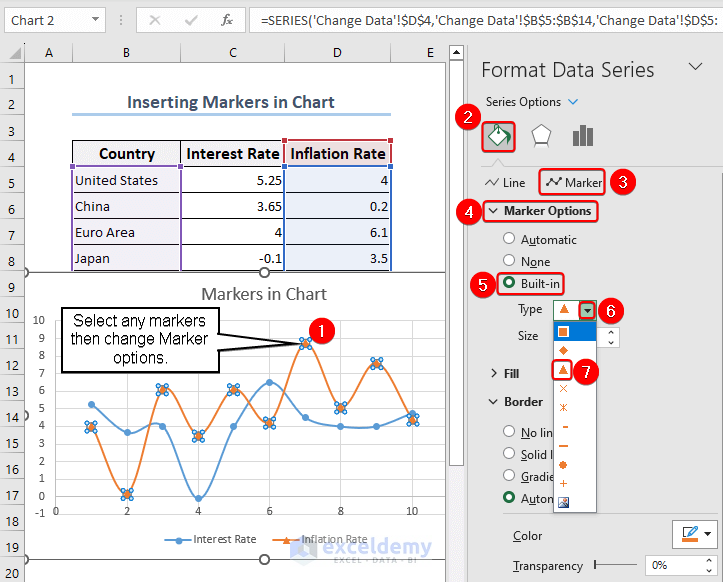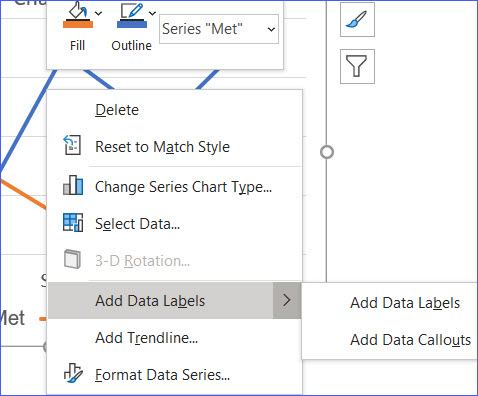3 Simple Steps to Use Markers in Excel

Markers in Microsoft Excel are not physical markers but rather data points or indicators within spreadsheets that can be visually represented to enhance data analysis and presentation. Using markers can significantly improve the readability and interactivity of your data, making it easier to interpret, highlight trends, or focus on specific data sets. Here's how you can effectively use markers in Excel in three simple steps:
Step 1: Define Your Data

Before you start placing markers, it’s important to understand the structure of your dataset:
- Identify Key Metrics: Determine which data points are crucial for your analysis. These could be sales figures, project milestones, or any metrics you want to emphasize.
- Understand Data Relationships: Look for correlations, trends, or anomalies in your data. This step will guide how you place your markers.
🌟 Note: Ensure that your data is clean and organized to facilitate easier marker placement and analysis.
Step 2: Apply Markers with Visual Techniques

Excel provides several ways to mark your data:
- Using Conditional Formatting:
- Select the range where you want to apply markers.
- Go to Home > Conditional Formatting > New Rule.
- Choose a rule type like Format cells that contain… and set conditions where markers will be applied, such as cells with values greater than a threshold.
- Select a format for the markers, for example, bold, different color, or a data bar.
- Adding Data Markers in Charts:
- Create or select the chart you want to work with.
- Right-click on the data series and choose Format Data Series.
- Under Marker Options, you can choose to add markers at data points, customize their size, style, and color.
- Manual Marking: For specific cells or data points, you might manually change the cell format or use icons from the Insert tab to mark important data.
⚠️ Note: Remember that while visual markers are great for presentation, they should not distort data interpretation.
Step 3: Analyze and Interpret Data

With markers now in place, you can analyze your data more effectively:
- Spot Trends: Markers can help in quickly spotting where data exceeds or falls below set thresholds.
- Highlight Anomalies: Markers make it easy to identify outliers or unusual data points for further investigation.
- Focus on Key Areas: Use markers to guide stakeholders or users to pay attention to certain data aspects.
Markers in Excel, when used thoughtfully, transform a standard spreadsheet into an insightful, interactive analysis tool. They facilitate not just in data visualization but also in making your work more effective by:
- Speeding up data interpretation.
- Enhancing the visual appeal to stakeholders.
- Guiding data-driven decisions with clear visual cues.
🧐 Note: Use markers sparingly to avoid cluttering the spreadsheet, which can lead to confusion rather than clarity.
To wrap things up, marking data points in Excel can turn a mere collection of figures into a powerful, dynamic tool for analysis and presentation. Whether it's for internal reviews or presentations to stakeholders, using markers allows for better communication of key metrics, trends, and insights in your data. Keep in mind the balance between highlighting important information and maintaining overall readability.
Can markers be used with any type of chart in Excel?

+
Markers are versatile and can be applied to most types of charts in Excel, including line charts, scatter plots, and even bar charts for emphasis. However, the effectiveness might vary depending on the chart type and the density of data points.
What’s the advantage of using conditional formatting for markers?

+
Conditional formatting allows for automatic and dynamic application of markers based on the values of your data. This saves time and ensures consistency when large datasets are involved.
How do markers help in data analysis?

+
Markers in Excel help by visually emphasizing key data points or trends, making it easier to analyze, interpret, and communicate insights from large or complex datasets. They draw attention to important figures, anomalies, or thresholds.